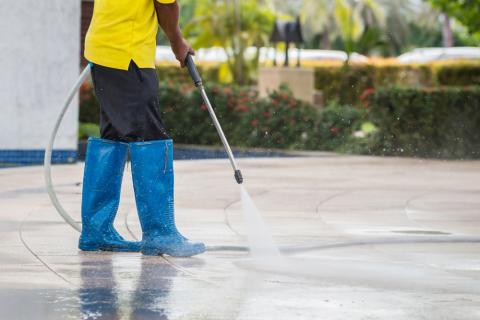If your water bills are rising, and there’s no clear reason why, then you may have a leak somewhere on your site. As many leaks occur in underground pipes, they can often go undiscovered for months, which could increase your operational costs unnecessarily.
So if you do suspect that you have a leak, it pays to take action quickly – but how can you check whether your suspicions are correct? Here’s a step by step guide to checking for leaks in your business:
Before you get started
When testing for leaks, you will need to either ensure that no water is used for a prolonged period or turn the water supply off completely, so it’s best to choose a time when your premises will be empty.
Checking for external leaks
To find out whether you have a leak in your supply pipe (which runs between your stop tap and your water meter), simply:
- Locate your water meter. If you’re working on a larger site, your meter is likely to be located underground in a specific meter chamber, or it may be in a dedicated meter house or plant room. Smaller sites may have internal water meters, which will be found close to where the water pipe enters the premises.
- Find your internal stop tap, which should be close to where the service pipe enters your premises, and turn it clockwise to close it.
- Take a meter reading, then take a second reading around an hour later.
Has the meter reading changed? If it has, then you have a leak in your supply pipe.
Checking for internal leaks
Don’t assume that you’d know if there were any water leaks inside your business – some leaks can be difficult to detect, such as cisterns that leak into the toilet bowl. To check for internal leaks, you need to:
- Turn off any internal appliances that use water, such as taps and dishwashers. Don’t forget to turn off your central heating!
- Leave the internal stop tap on and take a meter reading before you leave.
- When you return in the morning, take another meter reading.
If the reading is the same, then you don’t have an internal leak, but if it’s different, it’s likely that you have a leak somewhere within your building.
What next?
If you find that you have an internal or external leak, you should act quickly to ensure that you’re not paying more than you should be for your water. Seek professional help from a qualified plumber as soon as possible.
Be aware that if the leak is on your premises, then it is your responsibility to fix it and you are responsible for any water lost. However, if the leak is on the other side of the meter, contact your local wholesale water supplier to get it repaired.
At SES Business Water, we’re keen to help our customers with all their water-related challenges. Visit our Insight page for more handy tips on how to manage your business water.









